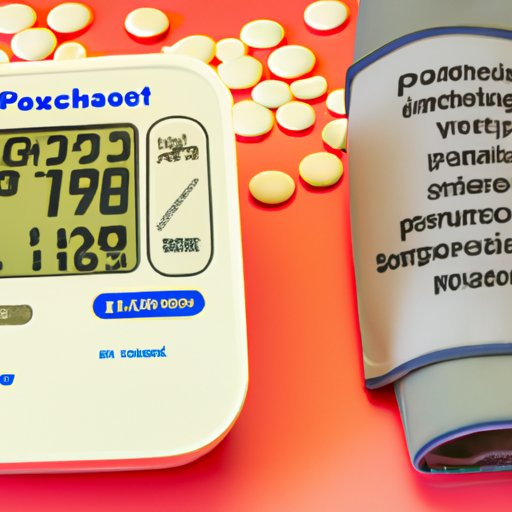Introduction
High blood pressure, also known as hypertension, is a serious condition that can lead to a number of health complications such as heart disease, stroke, and kidney failure. It is important to monitor your blood pressure regularly in order to identify any potential problems early on. This article will provide an overview of how to tell if your blood pressure is high, including at-home monitoring equipment, recognizing symptoms, visiting the doctor, and understanding risk factors.

Monitor Your Blood Pressure with Home Monitoring Equipment
One of the best ways to monitor your blood pressure is with a home monitoring device. These devices are relatively inexpensive and easy to use. When selecting a device, look for one that has been approved by the FDA and has been tested for accuracy. Make sure it fits comfortably on your arm and is able to accurately measure your blood pressure.
In order to use the device properly, you should take your blood pressure at the same time each day, preferably in the morning. Take several readings and record the results in a logbook. If you notice any changes or irregularities, make sure to contact your doctor immediately.

Recognize the Symptoms of High Blood Pressure
Although there may be no obvious signs or symptoms of high blood pressure, there are some warning signs to watch out for. People with high blood pressure may experience headaches, dizziness, blurred vision, chest pain, and difficulty breathing. If you experience any of these symptoms, it is important to seek medical attention right away.
It is also important to note that some people may not experience any symptoms at all. This is why it is so important to regularly monitor your blood pressure, as undiagnosed high blood pressure can lead to serious health complications.
Visit Your Doctor for a Check-up
Visiting your doctor for regular check-ups is one of the best ways to monitor your blood pressure. During a check-up, your doctor will measure your blood pressure and check for any underlying conditions that could be causing it to rise. They may also recommend lifestyle changes such as diet and exercise in order to maintain healthy blood pressure levels.
Your doctor may also recommend taking medication to help manage your blood pressure. Be sure to follow their instructions carefully, as medications can have serious side effects if taken incorrectly.
Have Your Blood Pressure Checked at a Pharmacy
Many pharmacies offer free blood pressure testing services. All you need to do is visit the pharmacy, let them know you’d like to have your blood pressure checked, and they’ll provide you with a cuff and instructions on how to use it. Once completed, they will provide you with the results and any advice they may have.
Having your blood pressure checked at a pharmacy is especially beneficial if you don’t have access to a home monitoring device. However, it is important to remember that this is only a temporary solution and that you should still schedule regular visits with your doctor for more accurate readings.
Monitor Your Diet and Exercise Habits
Maintaining a healthy diet and getting regular exercise can help keep your blood pressure in check. Eating foods that are low in salt and saturated fat, such as fruits, vegetables, lean proteins, and whole grains, can help lower your blood pressure. Additionally, engaging in regular physical activity can help strengthen your heart and reduce stress, both of which can help keep your blood pressure at a healthy level.

Understand Risk Factors for High Blood Pressure
Certain risk factors can increase your chances of developing high blood pressure. These include age, gender, genetics, and certain medical conditions. It is important to understand these risk factors and be aware of any potential health issues that may arise from them.
Conclusion
High blood pressure is a serious condition that can lead to a number of health complications. In order to identify any potential problems early on, it is important to monitor your blood pressure regularly. This can be done using home monitoring equipment, recognizing symptoms, visiting the doctor, having your blood pressure checked at a pharmacy, and understanding risk factors.
By following these steps, you can ensure that your blood pressure remains at a healthy level and avoid any potential health complications. Remember to stay informed and proactive when it comes to monitoring your blood pressure.
(Note: Is this article not meeting your expectations? Do you have knowledge or insights to share? Unlock new opportunities and expand your reach by joining our authors team. Click Registration to join us and share your expertise with our readers.)
